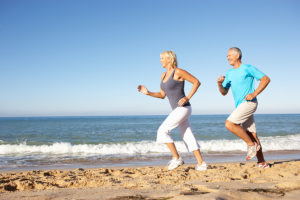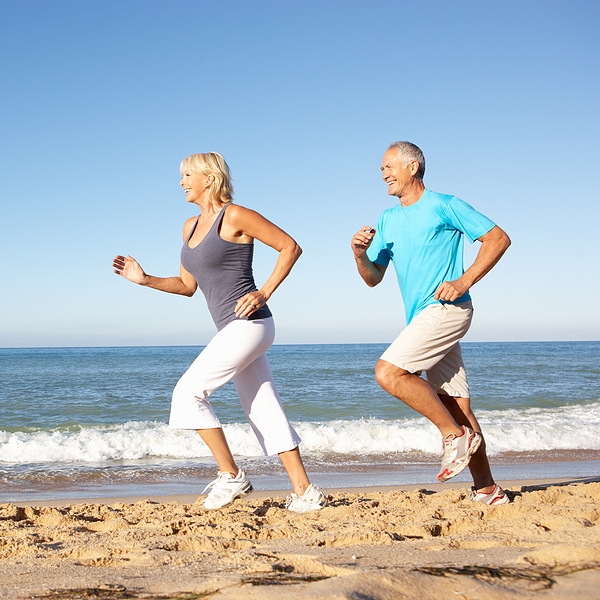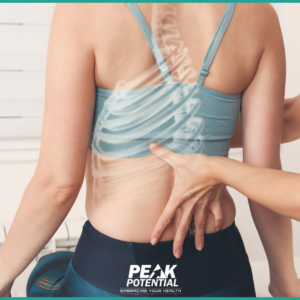
Summer is the season where adults who were out of shape during the winter jump back into their favorite sports. In addition, kids who were tied to homework and video games fill up ball fields, playgrounds, and parks.
Both children and adults are more likely to experience a sports injury during the summer due to this increased level of physical activity. Knowledge and prevention is the best way to combat summer sports injuries.
Here are the most common ones we hear about from friends and family . . . as well as those we treat daily in the clinic:
1. Runner’s Knee
For runners and cyclists, this is a common complaint that creeps up as the summer goes on. There is no incident or trauma that occurs, but pain comes on gradually over time. Symptoms include a burning or pain on the outside of the thigh or knee.
At the onset of pain, check your shoes to be sure you they aren’t breaking down and you have good support. Prescription orthotics can often resolve this problem in the early stages. Stretching and strengthening are also an important part of recovery, especially the core and buttocks.
2. Tennis or Golfers Elbow
Both Tennis and golf require grip strength and exaggerated movements of the wrist and elbow. Subsequently, pain can occur where the tendons of the forearm muscles attach to the bony bumps on your elbow. Tennis elbow pain is on the outside of the elbow and golfers elbow pain occurs on the inside of the elbow.
Both cases are repetitive use injuries and are characterized by local pain and tenderness, weakness, and possible numbness or tingling into the fingers. A splint, elastic bandage, or taping technique may be used to reduce load on the tendons and decrease muscle strain.
3. Ankle Sprain
The uneven terrain we encounter on the beach or hiking trail can lead to ankle sprains. It occurs when we land awkwardly, twist, or fall causing pain, stiffness, and swelling in the ankle. The symptoms mainly occur on the outside of the ankle joint just below the ankle bone.
Immediate treatment can include ice and compression to decrease inflammation. Swimming and cycling are better exercise alternatives during recovery.
4. Shin Splints
If you have pain on the inside of the shin bone, it is likely shin splints. The pain usually appears gradually and gets worse with running or walking especially on hard surfaces. It most often occurs with new athletes who progress too quickly or abruptly change their workouts.
Cross training on a bicycle or rowing machine can give these muscles a chance to rest. During the recovery phase, the areas above and below the shin (hamstring, Achilles tendon, quads, and calf muscles) need to be both stretched and strengthened to support the lower leg.
5. Plantar fasciitis
Inflammation and pain across the bottom of the foot is commonly plantar fasciitis. This pain usually occurs most severely with your first steps in the morning and decreases as you move more. It can easily return during long periods of standing or after rising from prolonged sitting.
Stretching, strengthening, physical therapy, and foot orthotics are the most effective treatments for the symptoms of plantar fasciitis.
6. Concussion
A concussion is a type of traumatic brain injury caused by a bump or blow to the head. They most often occur when bicycling, on the playground, or during contact sports. Symptoms include confusion, vomiting, vision changes, headaches, irritability, and memory disturbances.
If a concussion is suspected, an evaluation by a healthcare professional is necessary. Following general safety guidelines and wearing protective gear (especially helmets) decrease the risk of concussion.
7. Heat Stroke
When the body can’t cool down with sweat due to dehydration it can overheat. Stay hydrated and avoid this extreme before it becomes a medical emergency. Symptoms include dizziness, throbbing headache, confusion, nausea, and/or rapid heartbeat.
Avoid heat stroke by drinking plenty of water, replacing lost electrolytes, and take breaks in the shade on very hot days.
We hope this information empowers you instead of discourages you from getting out and enjoying your favorite summer activities. Getting outside can be great medicine for both your mind and body.
If you need more tips and tricks on getting rid of the most common aches and pains (the ones we hear about every day from folks just like you), then download our FREE Injury Recovery Report . . .
How to Get Fit & Stay Fit: 7 Secret Recovery Strategies That Pro Athletes Know and Use




